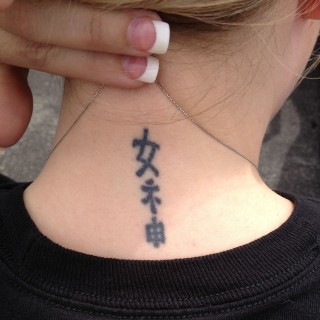Here is a link to some little subgroup in Germany where they discuss Chinese tattooing. They are interested in the meaning of various tattoos, argue about the corect writing of the graphics andsoon. It`s of course not an important subgroup or action in which they are engaged.
I pick up this link and communicate it, not in order to invite you to get your own tattoo. ( You must know I come from the times where only sailors or criminals had their tattoos ;-)) No I want to underline that there can be some activity group in the one culture w ich is totally engaged in some cultural practice of a totally different culture.
Maybe you know about those littel cultural islands. I once heard for example that there is an Austrian or Bavarian village totally rebuild in China somewhere. Or that they celebrate the German carneval in some Chinese Metrople. Or that there is Chinese Carneval Club in Bonn / Germany.
I wonder how those little islands will develop and build up some kind of grass root integration. 😉
http://hanzismatter.blogspot.de/
Read More








